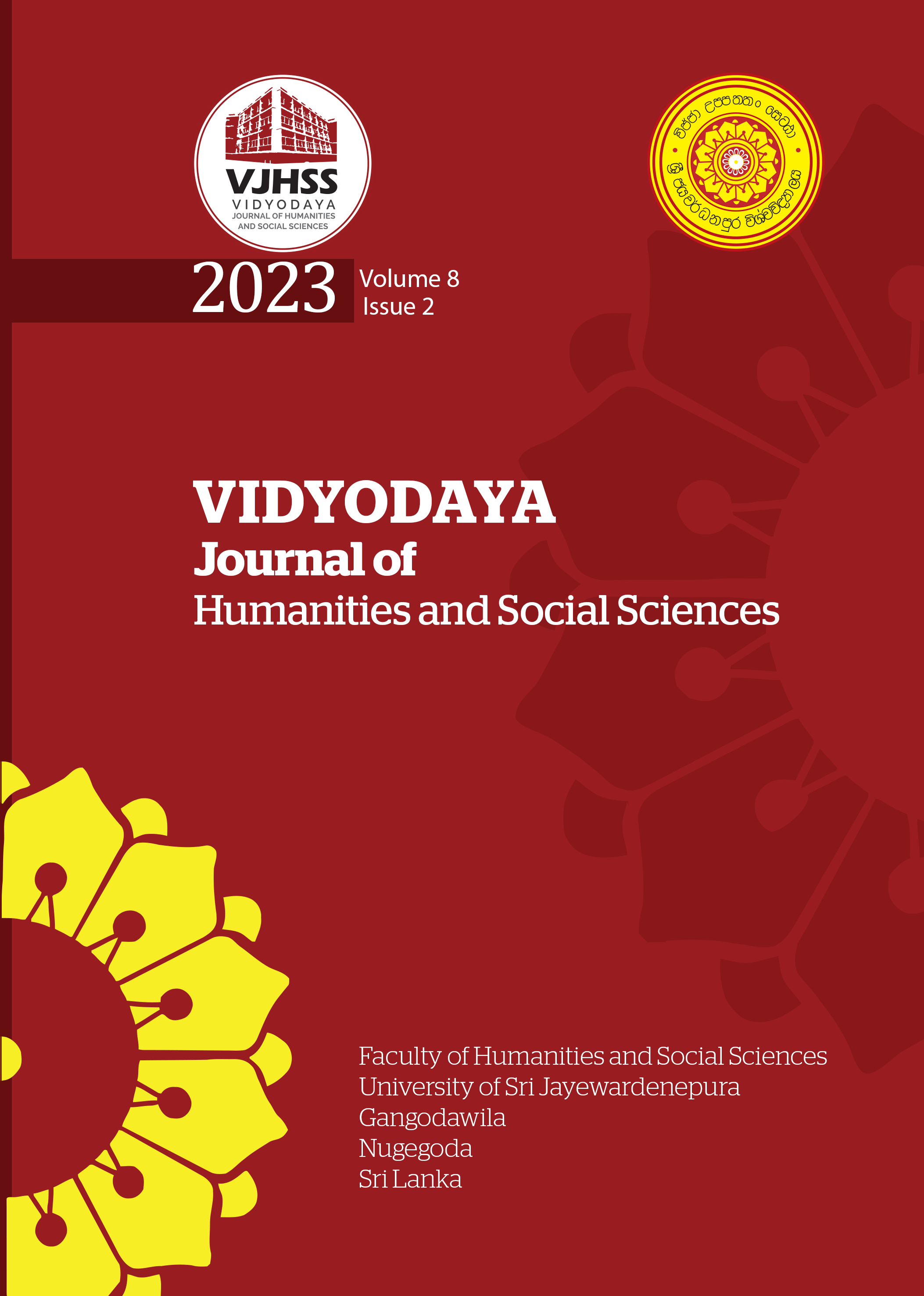Study on the Uniqueness of Vessanthara Jataka Stories in Sri Lankan Buddhist Temple Paintings (1750 - 1900 A.D)
Abstract
Archeological and literary sources attest that the “Jataka Stories” were subject to temple paintings from the second century onwards. The Vessanthara Jataka has featured prominently among temple painting in several eras of Sri Lankan history. Vessanthara jataka is a famous jataka story which is highlighted among other jataka stories in Buddhist shrines. The specialty given to the Vessanthara jataka in the paintings of Kandy era is particularly noticeable. This feature can be clearly observed in the temples which were built between 1750 and 1900. Some of these temples, located in the up country were patronized by royals like King Kirthi Sri Raja Singha. Other temples in the low country were built with the patronage of the rising middle class. Even with many fluctuating political and social issues, it seems the prominence given to the depiction of the Vessantara jataka was stable and unshakable. Giving priority to the Vessanthara jataka seems to have been a process carried out by a group of patrons, monks, artists and general public patrons who may have expected to achieve their political and social targets through the depiction of the vessanthara jatakaya. Buddhist monks have also attempted to convey the message of Buddhism through the depiction of Vessanthara jatakaya. Artists may have been interested in depiction of the “Vessanthara jataka” story because it was an opportunity to display their talent and attract others. It seems that the general public was also attracted to the Vessanthara jatakaya because of the characters of that jataka story and its sensitive and emotional scenes. The paper will examine the allocation of space to the Vessanthara jataka and its tactful visual techniques.



